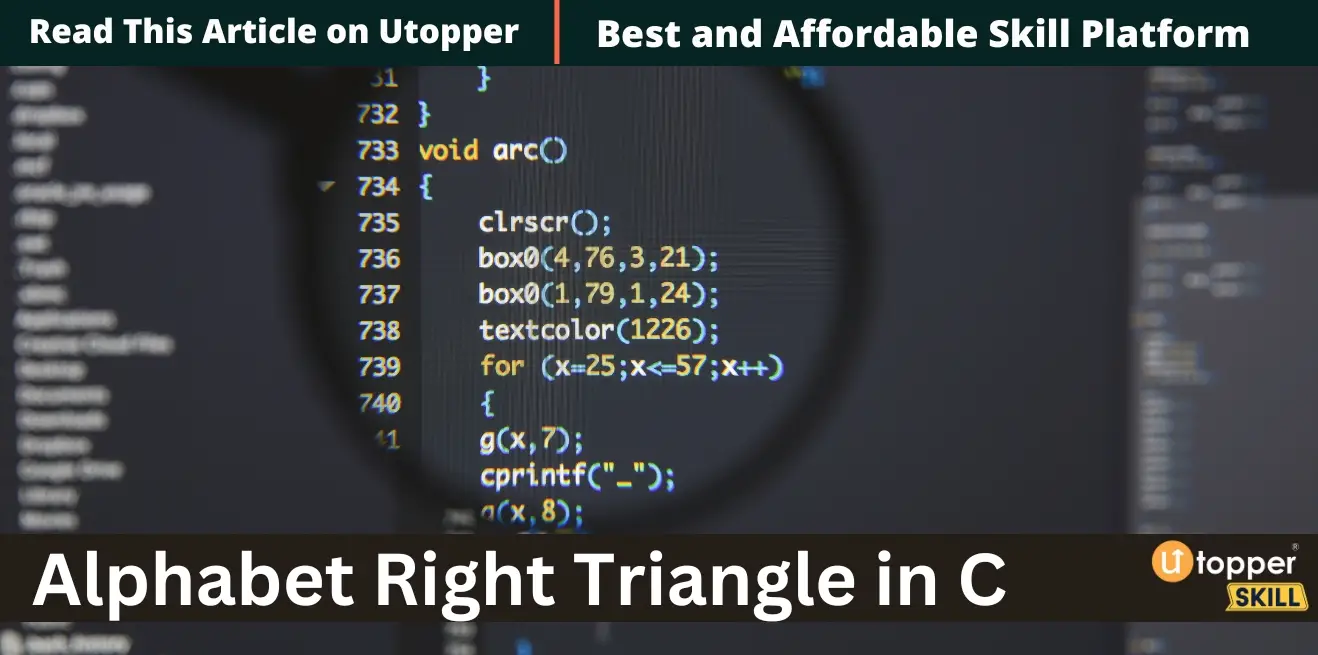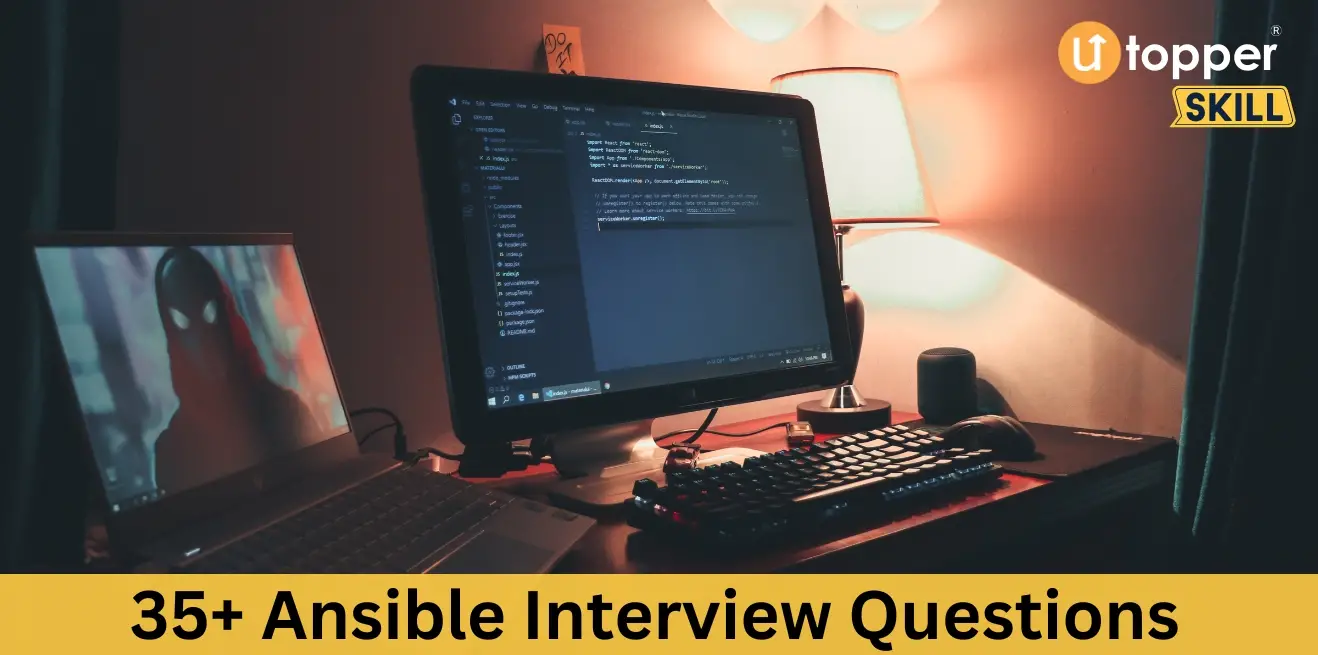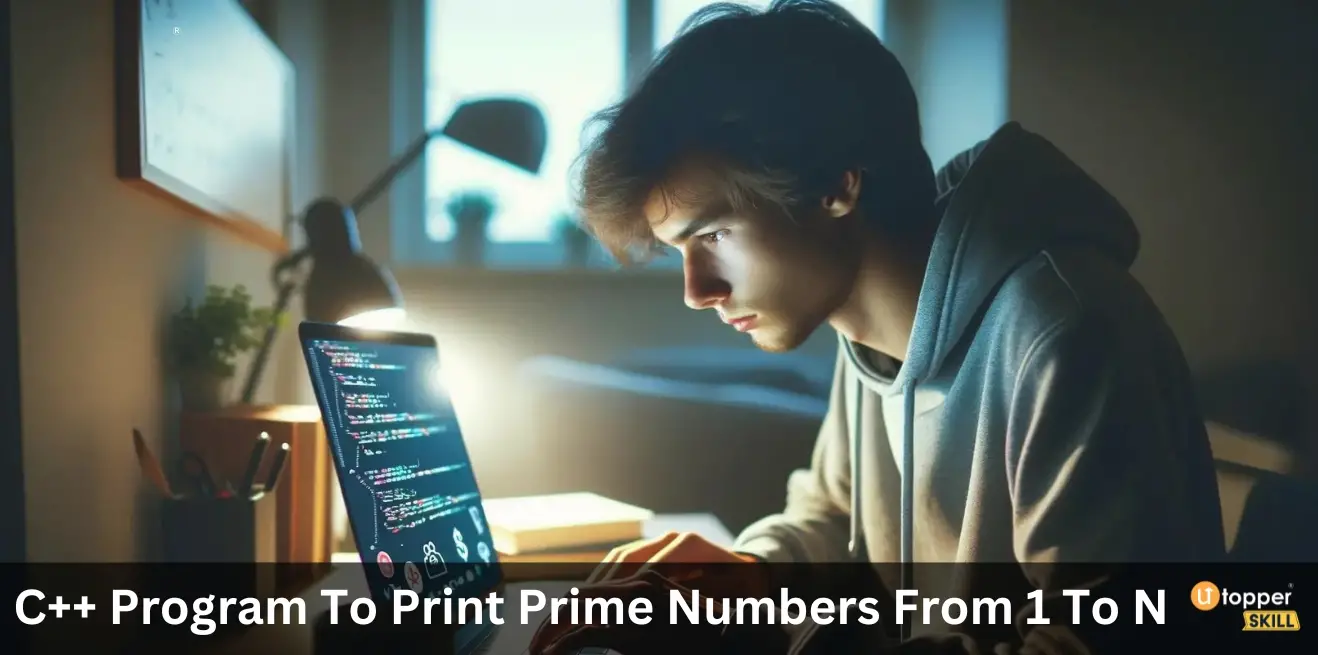Top C Interview Questions and Answers
Prepare for your next C programming interview with our comprehensive list of the Top 40 C Interview Questions with detailed answers. These interview questions are designed for both students and professionals. Our Interview Questions offers clear, concise explanations to help you understand core concepts and ace your interviews. Enhance your knowledge and boost your confidence with these expertly crafted questions and answers. Let’s dive into this valuable guide to enhance your understanding of C Programming and ace your next interview.
Basic C INTERVIEW QUESTIONS
Q.1 What is a variable in C?
A variable in C is a named storage location in the computer’s memory that can hold a value which may change during the execution of the program. Each variable in C has a specific type, which determines the size and layout of the variable’s memory, the range of values that can be stored within that memory, and the set of operations that can be applied to the variable.
Q.2 What are the basic data types in C?
The basic data types in C include int for integers, float for floating-point numbers, double for double-precision floating point numbers, char for characters, and _Bool for Boolean values. These types serve as the building blocks for constructing other data types and variables in C.
Q.3 How do you declare a constant in C?
A constant in C can be declared using the const keyword before a datatype to denote that its value will not be changed after its declaration. For example, const int maxLimit = 100; declares a constant integer named maxLimit with a value of 100.
Q.4 What is the difference between == and = in C?
In C, == is the equality operator that compares two values for equality and returns 1 if they are equal and 0 otherwise. The = operator is the assignment operator that assigns the value on its right to the variable on its left.
Q.5 What is a pointer in C?
A pointer in C is a variable that stores the memory address of another variable. Pointers are used for various purposes in C, including dynamic memory allocation, efficient array processing, and implementing complex data structures like linked lists and trees.
Q.6 How do you print a string using the printf function?
To print a string using the printf function in C, you can use the %s format specifier within the string argument of printf. For example, printf("Hello, %s!", "World"); would print “Hello, World!”.
Q.7 What is the purpose of the return 0; statement in the main() function?
The return 0; statement in the main() function indicates that the program has executed successfully. It returns a status code to the operating system; a return value of 0 typically signifies successful execution, while other values can indicate different types of errors or statuses as defined by the programmer.
Q.8 How do you take user input in C?
User input in C can be taken using functions such as scanf from the standard input. For example, scanf("%d", &number); reads an integer from the user and stores it in the variable number.
Q.9 What is an array and how is it used in C?
An array in C is a collection of items stored at contiguous memory locations and accessible using an index. Arrays are used to store multiple values in a single variable, which can be efficiently accessed and manipulated using an index.
Q.10 What are header files in C?
Header files in C contain declarations of functions and variables, which are imported or included into a C program with the #include preprocessor directive. Header files help organize code into reusable blocks and can contain function definitions, macros, and definitions of data types. Common C header files include <stdio.h>, <stdlib.h>, and <string.h>.
Intermediate C INTERVIEW QUESTIONS
Q.11 How do you pass an array to a function?
In C, when passing an array to a function, you actually pass the address of the first element of the array. You should also pass the size of the array as an additional argument if the function needs to know the size. For example: void processArray(int arr[], int size) { ... }.
Q.12 Explain the difference between pass-by-value and pass-by-reference.
Pass-by-value means a copy of the actual value is passed to the function, so changes made inside the function do not affect the original variable. Pass-by-reference means a reference or address of the variable is passed, so changes made inside the function affect the original variable.
Q.13 What is a structure in C and how do you use it?
A structure in C is a user-defined data type that allows grouping different data types together. It is used to represent a record. For example:
struct Person {
char name[50];
int age;
};
struct Person person1;
Q.14 How do you use pointers within a structure?
Pointers can be used in structures to access and modify the members. Pointer to a structure is declared like any other pointer, and you can access its members using the arrow (->) operator. For example:
struct Person *ptr = &person1;
printf("%d", ptr->age);
Q.15 What is dynamic memory allocation? Explain malloc and free.
Dynamic memory allocation in C allows programs to obtain memory at runtime. malloc is used to allocate a specified amount of memory and returns a pointer to the beginning of the block. free is used to release the allocated memory. Example:
int* ptr = malloc(sizeof(int) * 10); // Allocates memory for 10 integers
free(ptr); // Frees the allocated memory
Q.16 What are command-line arguments?
Command-line arguments are parameters passed to the program when it is invoked, which allow the user to control program behavior from outside rather than hard coding those values inside the code.
Q.17 Explain the scope and lifetime of a static variable.
A static variable in C has a local scope but a global lifetime. It is initialized only once and retains its value between function calls. Static variables are stored in the data segment of memory.
Q.18 How do function pointers work in C?
A function pointer in C is used to store the address of a function that can be passed as arguments to other functions or called dynamically during runtime. It is declared by specifying the function’s return type, followed by an asterisk and the function pointer name, with the function’s parameters in parentheses.
Q.19 What are the differences between while and do-while loops in C?
A while loop checks its condition before executing any of the statements within the loop, whereas a do-while loop executes its statements at least once before checking the condition.
Q.20 What is recursion in C? Provide an example.
Recursion in C is a function calling itself to solve a problem. An example is the factorial calculation:
int factorial(int n) {
if (n == 0) return 1;
return n * factorial(n - 1);
}
Q.21 How do you handle errors in C using errno?
errno is a global variable that stores error numbers set by system calls and some library functions. After a function that can set errno is called, errno can be checked to determine if the error occurred and what type of error it was.
Q.22 Explain the difference between #include <filename> and #include "filename".
#include <filename> is used for system header files, while #include "filename" is used for header files you have defined. The compiler searches for the system headers in the system directories and for the user-defined headers in the local directories first.
Q.23 What is a linked list and how do you implement one?
A linked list is a data structure that consists of nodes, where each node contains data and a pointer to the next node in the sequence. It is implemented using struct and pointers in C:
struct Node {
int data;
struct Node* next;
};
Q.24 What is a union and how does it differ from a structure?
A union in C allows storing different data types in the same memory location. It is used to manage different kinds of data in the same memory footprint. Unlike structures, which allocate enough space to store all their members, a union only allocates enough space to store the largest member.
Q.25 Explain how a switch statement works and its advantages over multiple if statements.
A switch statement provides a way of dispatching execution to different parts of code based on the value of an expression. It is generally more readable and slightly faster than multiple if statements when dealing with many branches based on the value of a single variable.
Q.26 What are bitwise operators? Provide examples of how they are used.
Bitwise operators perform operations on the binary representations of numbers. Examples include & (AND), | (OR), ^ (XOR), ~ (NOT), << (left shift), and >> (right shift). These are used for tasks like setting, clearing, or toggling specific bits in a data item.
Q.27 How do you use the sizeof operator?
The sizeof operator is used to determine the size, in bytes, of a data type or a variable. It helps in portability by determining how much memory a particular type consumes on a machine.
Q.28 Explain the process of linking and loading in C.
Linking in C is the process of combining various pieces of code and data into a single executable that can be loaded into memory. Loading is the process of placing the executable into memory for execution. The linker resolves references to undefined symbols, while the loader places the executable into memory.
Q.29 What is a macro, and how do you use it?
A macro is a fragment of code which has been given a name. Whenever the name is used, it is replaced by the contents of the macro. They are defined using #define.
Q.30 How does the const keyword differ from #define?
The const keyword is used to declare variables whose value cannot be changed. It is type-safe. #define is used to create macros, which are not type-safe and can replace text in code before compilation without regard to context.
Advanced C INTERVIEW QUESTIONS
Q.31 How do you use setjmp and longjmp in C?
setjmp and longjmp are used in C for non-local jumps, which means control transfers from one function back to a function higher up in the call stack. setjmp saves the calling environment for later use by longjmp, and longjmp restores that environment, causing the program to continue executing from the point where setjmp was called. This is useful for handling errors and exceptions in C where other exception handling mechanisms are absent.
Q.32 Explain how you can prevent a buffer overflow in C.
To prevent buffer overflows in C, you should:
- Use functions that limit the number of characters copied to buffers, such as strncpy instead of strcpy, and snprintf instead of sprintf.
- Validate all input data to ensure that it does not exceed the buffer size.
- Use modern memory-safe languages or libraries that perform automatic bounds checking where possible.
Q.33 What is the difference between a process and a thread?
A process is an instance of a program running in a system, which has its own memory space. A thread is the smallest sequence of programmed instructions that can be managed independently within a process. Unlike processes, threads share the same memory space within a process but operate more efficiently than running multiple processes.
Q.34 How do you implement inter-process communication (IPC) in C?
Inter-process communication (IPC) in C can be implemented using various mechanisms such as:
- Pipes (named and unnamed)
- Message queues
- Shared memory
- Sockets These tools allow processes to exchange data and synchronize their actions efficiently.
Q.35 Explain the volatile keyword and its importance in C.
The volatile keyword in C is used to tell the compiler that a variable’s value may change at any time—without any action being taken by the code the compiler finds nearby. It’s important in programming for hardware where certain registers might change independently, and for multithreaded applications where a variable may be modified by one thread and read by another.
Q.36 What are mutexes and how are they used in C?
Mutexes (mutual exclusions) are synchronization primitives used to control access to a resource by multiple threads. In C, mutexes prevent race conditions by allowing only one thread at a time to execute a particular section of code (critical section) that accesses shared data.
Q.37 Explain how you can optimize C code for better performance.
To optimize C code:
- Minimize the use of heavy loops.
- Use efficient algorithms and data structures.
- Optimize memory usage and management.
- Use compiler optimization flags like
O2orO3. - Avoid unnecessary function calls and inline small functions.
- Utilize cache-friendly code patterns.
Q.38 Discuss how to handle signals in C.
Signals in C are notifications sent to a process to notify it of important events like division by zero or an attempt to access invalid memory. Signal handling can be implemented using the signal() function to set up signal handlers, which are functions that get called when a particular signal is received.
Q.39 What are memory leaks and how can they be prevented?
Memory leaks occur when a program fails to release memory that is no longer needed, causing wastage of memory resources. To prevent memory leaks:
- Ensure that for every
mallocorcalloc, there is a correspondingfree. - Use tools like Valgrind to detect leaks in development phases.
- Adopt good programming practices such as proper exception handling and resource management.
Q.40 Explain the concept of modular programming in C.
Modular programming is a software design technique that divides functionality into separate, interchangeable modules, each of which contains everything necessary to execute only one aspect of the desired functionality. In C, this is often done using separate source files and header files, which helps in organizing code better, making it easier to maintain, test, and debug.









